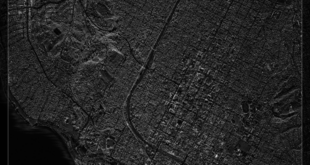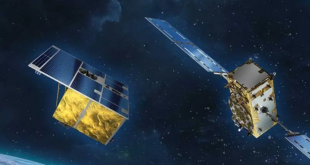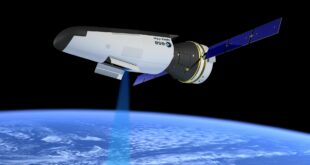by Jose Salgado

If AI (Artificial Intelligence) is the future, then AI plus Space equals future times two. According to Kenneth’s Research, AI in Space Exploration market was valued at approximately USD $2 billion in 2018 and is anticipated to grow at a rate of more than 7.25% by 2026. This includes machine-learning solutions for detecting new planets, space weather using magnetosphere and atmosphere measurement, integration of AI in space vehicles and satellites, as well as AI-based robots that can perform highly complex tasks.
In addition to Space Exploration, there is a more prominent market for AI in the Earth Observation (EO) sector, where according to the 10th edition of Euroconsult’s report, the EO data and services market should reach USD 8.5 billion by 2026 based on current growth trajectories. This same report predicts a market value of USD 6.5 billion by 2026, considering only new applications and solutions that will be developed to open new markets.
Domenico Grandoni, Head of Big Data, Analytics and Artificial Intelligence Competence Centre at e-GEOS, a joint venture by Telespazio (80%) and the Italian Space Agency (20%), believes that “the insurance sector will be able to get much more detailed and objective insights about risk assessment on its assets for different hazard types, benefiting from updated information on changes in the territory and historical impact analysis.”
Similarly, he thinks that “financial traders will be able to rely on objective information and reports to make informed decisions on investments, whether it is related to raw materials stocks or other valuable goods. Finally, sustainable energy production and pollution monitoring are two very promising applications since they require significant data fusion activities to distill relevant insights.”
Euroconsult’s report states that from 2007 to 2016, 181 EO-non-meteorology satellites were launched and the cost to develop these satellites generated $17.4 billion in manufacturing market revenues. They have also identified approximately 20 companies that have announced intentions to develop lower-cost constellations to collect data at a high revisiting rate based on smallsat and cubesat technologies. Since 2017, these new operators have attracted more than $600 million in venture capital to fund their initiatives.
As new AI applications for the EO sector continue to be unveiled, Domenico Grandoni says that “new customers from the commercial market are expecting a significant increase of self-service access to Geoinformation Services, as they value low effort and simple interfaces to integrate such data streams into their operational workflows. However, at e-GEOS, we believe that this trend will require a growth in terms of customer care capabilities to ensure a high quality service with stringent service-level agreements in line with the shift from research to operations for a growing number of geoinformation services.”

President of the Canadian Chamber in Italy, a Chamber 2.0 that focuses on innovation and new technologies. Honorary advisor to the Italian Intergovernmental committee for space. Columnist at COSMO magazine and Business Insider Mexico. Space Economy advisor.





